| ------********************************************************************ACRIDIDAE (SHORT-HORNED GRASSHOPPERS), CONT.SPUR-THROATED GRASSHOPPERS: SUBFAMILY MELANOPLINAE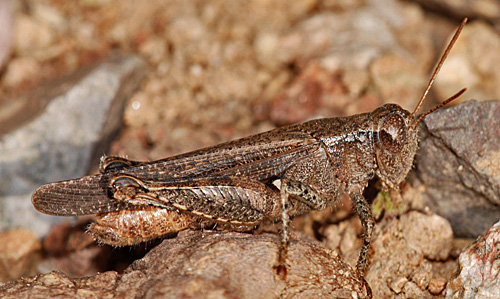
Aztec Rangeland Grasshopper (Aidemona azteca), one of the most common grasshoppers under oaks (31 October 2007)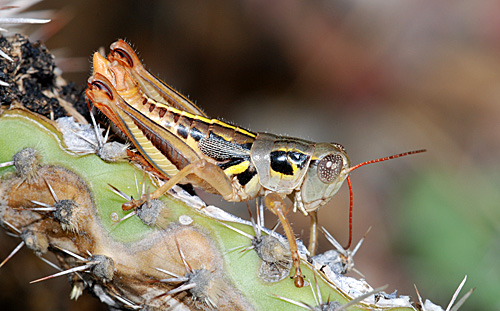
A male Humphrey’s Grasshopper (Barytettix humphreysii) perches on a cholla cactus (30 August 2008)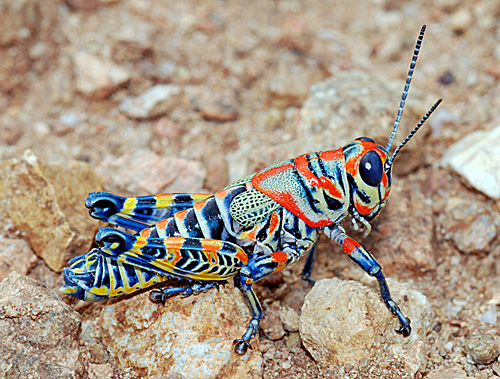
The Pictured Grasshopper (Dactylotum bicolor), is one of our most colorful and distinctive species. Both sexes are short-winged. (25 August 2008)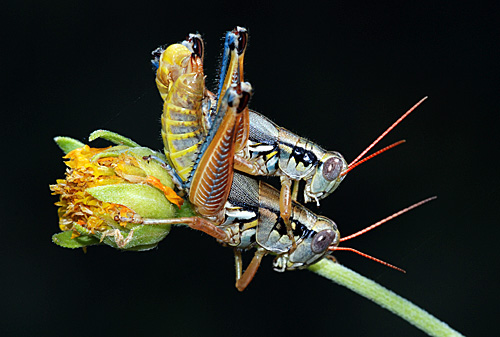
These are mating Arid Lands Grasshoppers (Melanoplus aridus) or the very similar Melanoplus desultorius. Both are common, widespread species and are difficult to tell apart. (30 August 2008)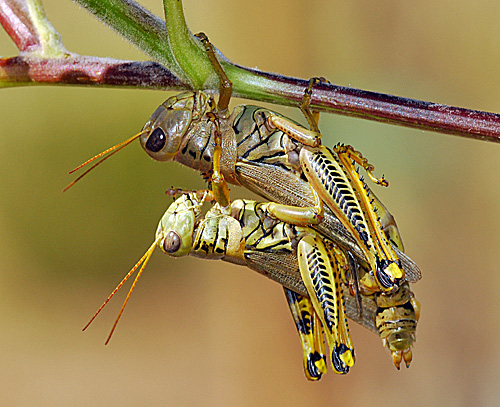
Differential Grasshopper (Melanoplus differentialis). This large, destructive species has a crisply defined herring bone pattern on the face of the hind femur. (18 October 2007)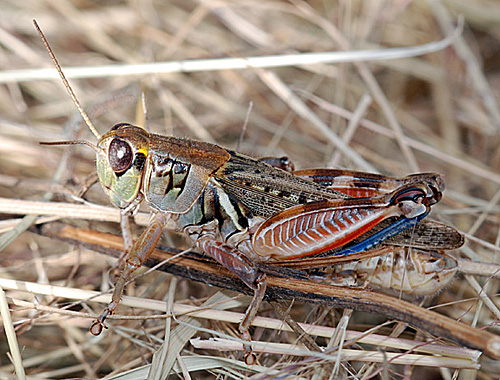
Gladston’s Spurthroated Grasshopper (Melanoplus gladstoni) (7 September 2008)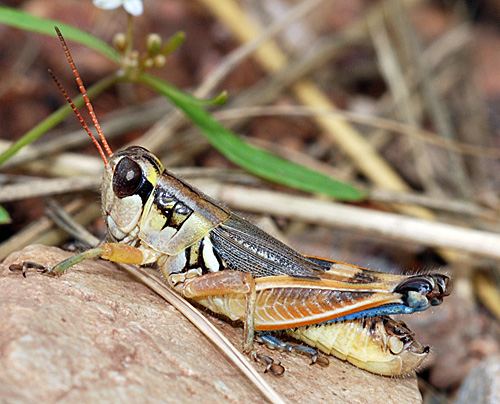
Lakin’s Grasshopper (Melanoplus lakinus). This is probably the most abundant grasshopper in the yard. Although it is small, its vast numbers do considerable damage to plants. (27 August 2008)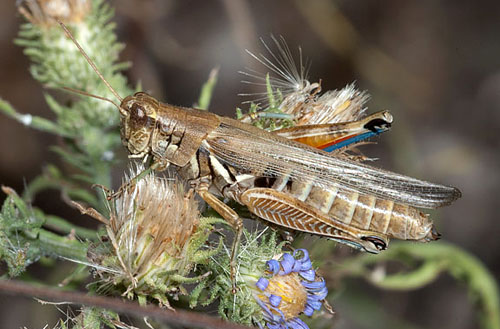
A female Pictured Spur-throat Grasshopper (Melanoplus pictus) perches on aster in the back yard (3 October 2010).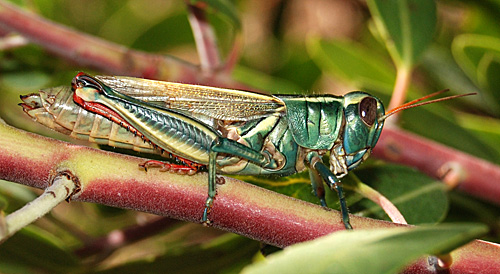
Two-striped Grasshopper (Melanoplus thomasi). During late summer, this species and Differential Grasshopper are the two conspicuous large grasshoppers in the yard. (16 October 2007)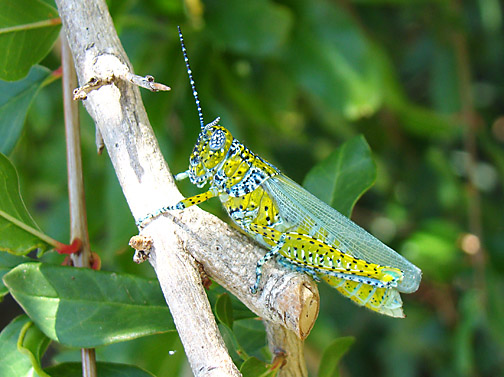
The Panther-spotted Grasshopper (Poecilotettix pantherinus) is one of the most attractive U.S. species. It was a couple of years before I found one in the yard. (4 August 2009) 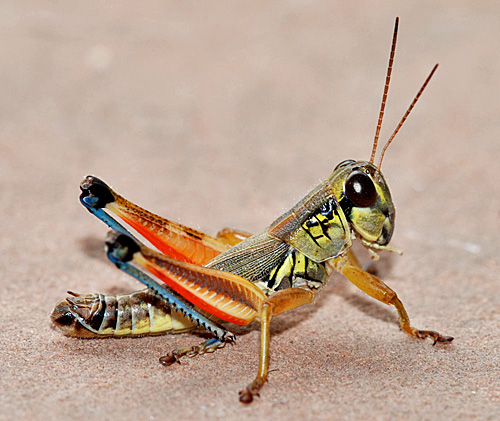
Large-headed Grasshopper (Phoetaliotes nebrascensis) This species can be very common, occurring in both long and short-winged forms. This individual is from Fort Huachuca, Sierra Vista, AZ. (30 August 2008)********************************************************************
MIGRATORY BIRD LOCUSTS (BIRD GRASSHOPPERS): SUBFAMILY CYRTACANTHACRIDINAE
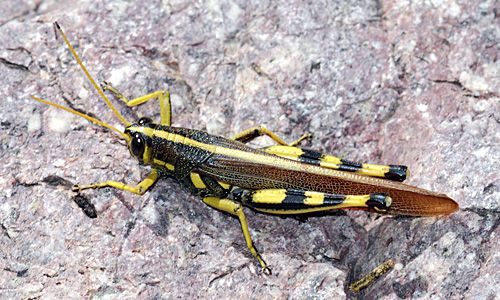
White-lined Bird Grasshopper (Schistocerca albolineata). Apparently most common in mesquite and acacia, it may also be found in the lower oak zone. (3 October 2008)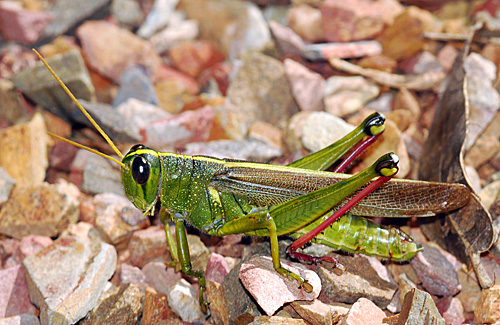
A green form of the White-lined Bird Grasshopper (Schistocerca albolineata). (21 October 2007).
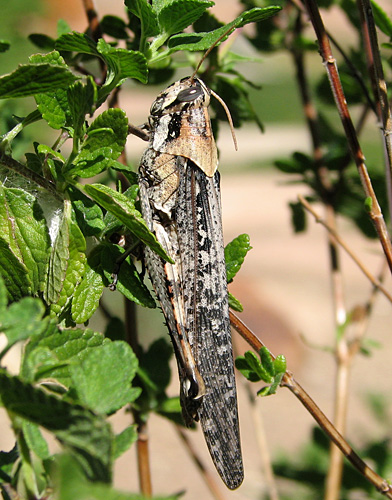
A large, slow-flying grasshopper flushed from mesquites may be a Gray Bird Grasshopper (Schistocerca nitens), one of our largest species. It occurs in a variety of habitats and flies through most of the year-including the winter months. (19 October 2008)
*******************************************************************TETRIGIDAE (PYGMY-GRASSHOPPERS)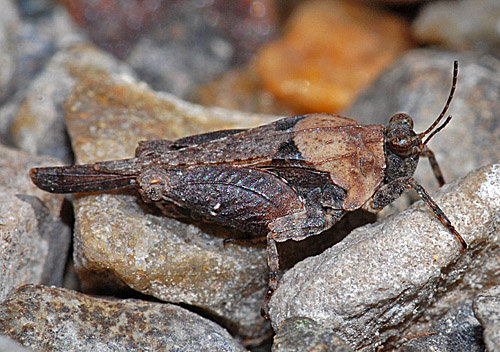
Tiny pygmy-grasshoppers are usually found around water. This Paratettix mexicanus, not much more than a centimeter in length, was perched on gravel at the edge of our backyard pond (31 March 2009)************************************************************The Trade Name Naturewide Images has been registered with The State of Arizona © Robert A. Behrstock 2018Images may not be reproduced without the Photographer's permission. |















